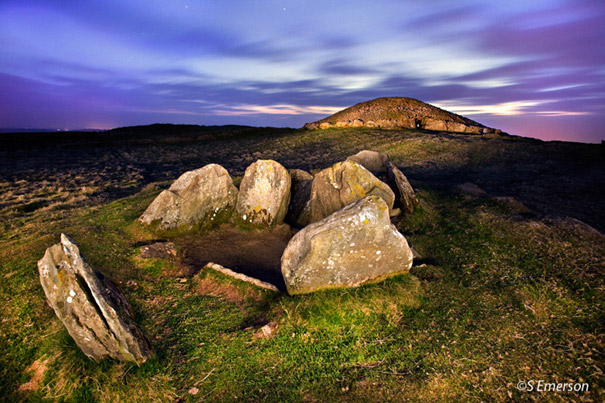The ancient Celts followed the movement of the sun and moon carefully. They knew exactly when the seasons changed, when the days started to grow and shrink. And they marked these important occasions, even building structures with enormous precision to allow light to fill the interior when the sun was in specific positions. Autumn equinox is one of those occasions they feted, and their monuments to these events inspire the designs popular on many Irish gifts today.
Equinox, the day when we have an equal amount of daylight and dark hours, happens twice a year. Over the course of the year, the number of daylight hours increases, peaks, then shrinks. Ireland is far north enough to have a significant difference in daylight hours between the summer and winter. In December and January, Ireland has less than eight hours of daylight with the sun rising after 9:00 am and setting before 6:00 pm. In June and July, the sun rises shortly after 5:00 am and doesn’t set until almost 10:00 pm. That dramatic change makes the equinox stand out.
This year, the equinox will be on September 21st, which is also the Jewish New Year. The 22nd is the Islamic New Year. (The Celtic New Year is November 1st.) So we are heading into a very significant season for many people around the world. The harvest season is also winding down in the northern hemisphere. No doubt that influenced our ancestors’ understanding of the equinox. It’s not quite the end of the season, but it is when we can see and prepare for the end. No wonder they felt it was important to step out of their normal routine and mark the occasion. (And that eagerness to step out of our routine and mark an occasion is one of those Irish gifts that make us who we are!)
How the Ancients Embraced the Equinox
Loughcrew is a cairn in County Meath where our ancestors celebrated the equinox. We don’t have many details on what they did, but we can speculate based on the few clues they left us. A cairn is a man-made mound of rocks. It can be large or small. The cairn in Loughcrew is just large enough to hold half a dozen people at a time. It has one main chamber and two smaller side chambers. To reach the main chamber, visitors walk down a low, narrow passage way. Inside, the elaborate carvings made by the ancient Celts are still clearly visible. At first glance, many of them resemble flowers. But experts believe they are actually drawings of the sun, which makes sense as it was a place where the equinox was marked.
We know they celebrated equinox at Loughcrew because when the sun rises on the equinox, it strikes the entrance of the chamber at just the right angle to illuminate the interior. We also know Loughcrew cairn was a special place because it is not that easy to reach. It is at the very top of a steep hill, and nothing could be built on the sharp slopes. But on a clear day, the view from Loughcrew is dazzling, taking in 18 different counties. It is a spot well worth visiting any day of the year to see first-hand the ancient carvings that are reproduced on so many different Irish gifts today.

